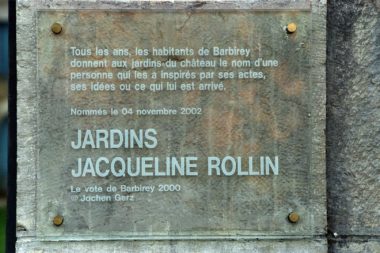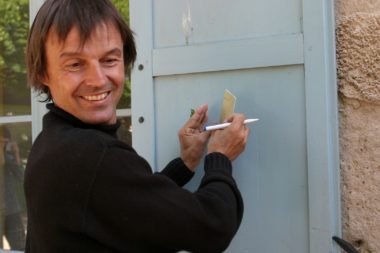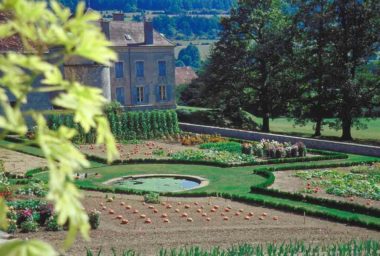Le vote de Barbirey
The vote of Barbirey
CR 876. Year 2000-2004







- FR
Donner chaque année au jardin le nom d’une personne vivante, différente, choisie par les villageois de Barbirey-sur-Ouche, de leur milieu ou du monde entier, qui les inspire au moment de leur choix grâce à ce qu’elle a fait, a voulu entreprendre ou encore ce qui lui est arrivé.
It could all have started with the recognition that time passes, and that as it passes we, our experiences and points of reference change. The passing of time has been evident from the changes going on around us, and it is only from here, from outside, in other words, that we have been able to perceive the changes in ourselves. We have felt something of the movement and duration of time, where we made a pause, where we took a look, marked a point in time from which our gaze could move forward. And from here, one day, something of that time that has passed with us became perceptible. The changes in things lay hidden in it and the reversal of values. So what would it mean to become aware of this?
Ulrich Krempel 1988
An example of this kind of democratization in art is his work Le Vote de Barbirey (2004), for which he invited the people in the French village of Barbirey each year to name their park after a person of their choice, someone who impressed them either by their deeds or something that happened to them.
Alexander Klar 2011
Les habitants, les visiteurs, les étudiants, les passants sont autant d’intervenants dans les œuvres de Jochen Gerz ; ils sont amenés à les investir par leur signature, leur contribution à la construction ou leurs paroles. En quoi cette co-présence à l’œuvre dans la création signe-t-elle un rapport singulier à ces productions ? De fait, la « position de contribution et d’expérimentation » du public, objet du travail d’Emmanuelle Lambert notamment dans l’institution muséale, est sans doute l’élément singulier dans le processus d’échange et de transmission du message porté par l’œuvre : la mémoire n’étant pas détenue par un monument mais par ceux qui le côtoient et décident de l’investir.
Dominique Trouche 2014
Categories
Keywords
Public authorship / Work in public space
Barbirey-sur-Ouche, France
Name plate, changing every year, glass, 44.5 x 37.5 cm
The cultural association Grand Public invited Jochen Gerz to participate in the “Artists in the Gardens project” taking place in a private park open to the public. According to his concept, a panel of seven adults from the village was randomly chosen to be part of a jury to elect a new name for the park each year. The names were chosen to honour the achievements of a living person. Both the laureates and the members of the jury changed every year. A glass plaque bearing the name of the person selected was installed at the entrance to the park, and all of the 230 residents of Barbirey were invited to a banquet at the castle. Le Vote de Barbirey ended after four years, when ownership of the gardens changed hands.
See related edition Kunst auf Rezept (Art on Prescription/ Art sur ordonnance) (858)
Participants
7 residents of Barbirey-sur-Ouche, changing every year
Laureates
Pierre Perret, Nicolas Hulot, Jacqueline Rollin, Guy Roux
Partners
L’Association Grand Public, Roland Garaudet, (owner 1989-2002), Jean-Bernard und Véronique Guyonnaud (owner since 2002), Laurence Vanpoulle (landscape architect), DRAC Bourgogne, Conseil Général de Côte d’Or, Conseil régional de Bourgogne, Municipalité de Barbirey-sur-Ouche, Crédit Agricole de Côte d’Or, Le mécénat culturel du Bien Public, Ecole Nationale Supérieure des Beaux Arts de Dijon, Goethe Institut Nancy
Realisations
Barbirey-sur-Ouche, October 2000 – October 2004
Bibliography
I: Barbirey 2000
II: Ed. 20, 2000. Ed. 21, 2000. Ed. 22, 2000. Ed. 23, 2000. Ed. 24, 2000. Bouillot 2000. Bouteillet 2000. Fevre 2000. Frizot 1, 2000. Frizot 2, 2000. Jaurès 2000. Nicolas 2000. Reneau 2000. Sausset 2000. Viron 2000. Ed. 1, 2002. Déotte 2002. Koutsikides/Saint-Do 2002. Mesnard 2002